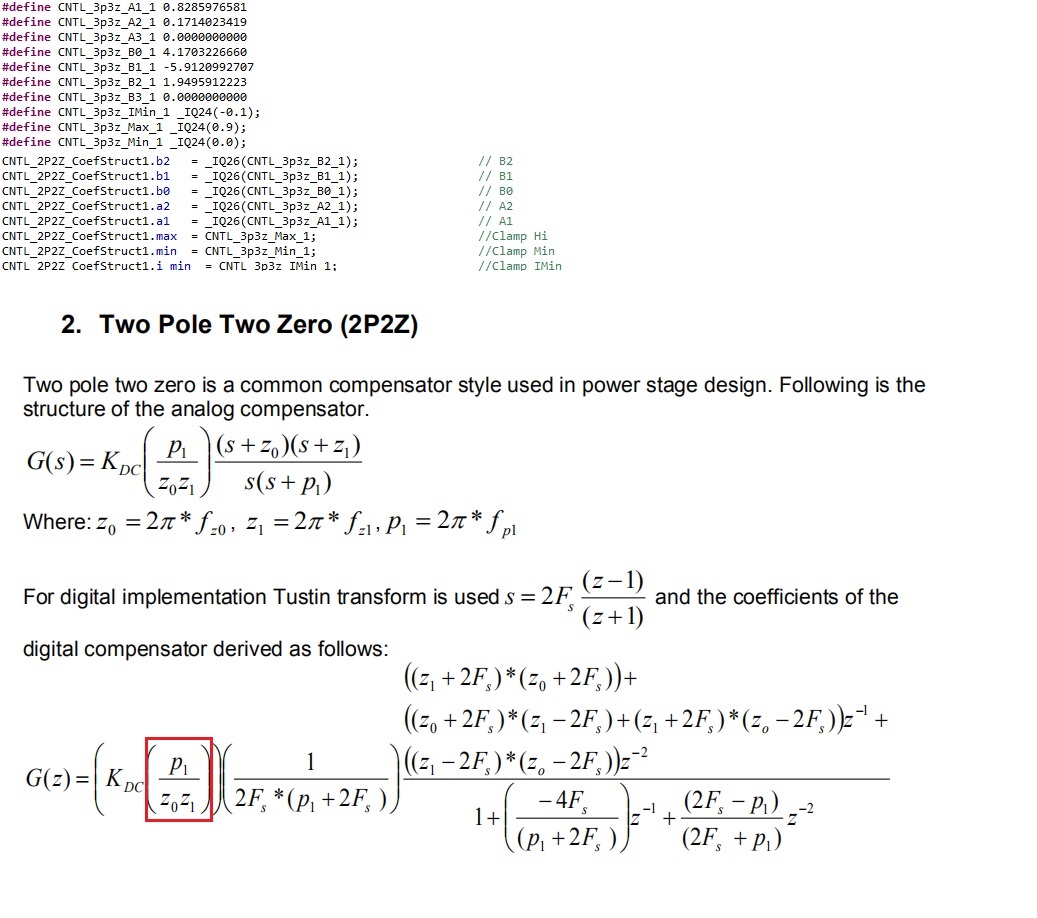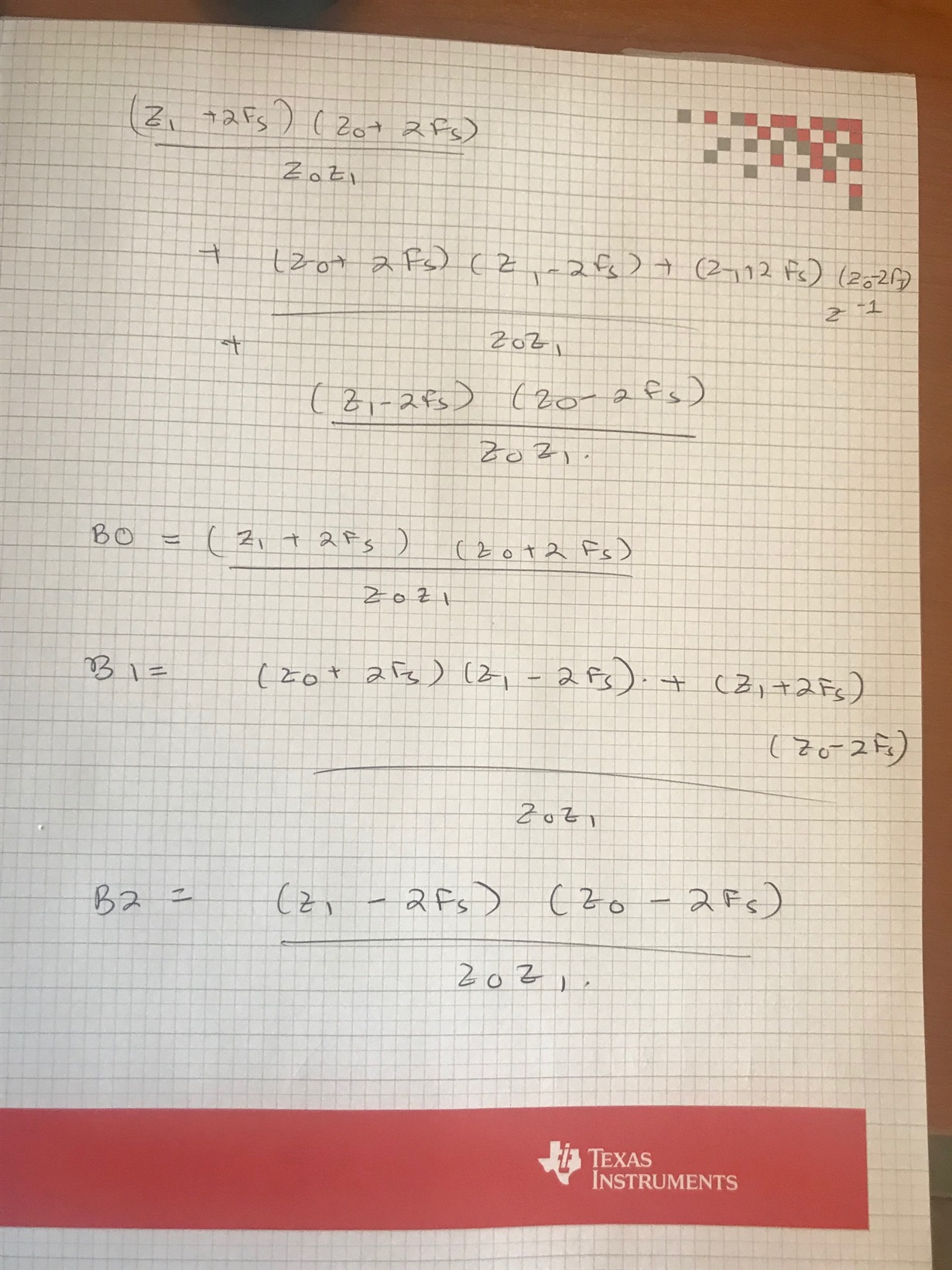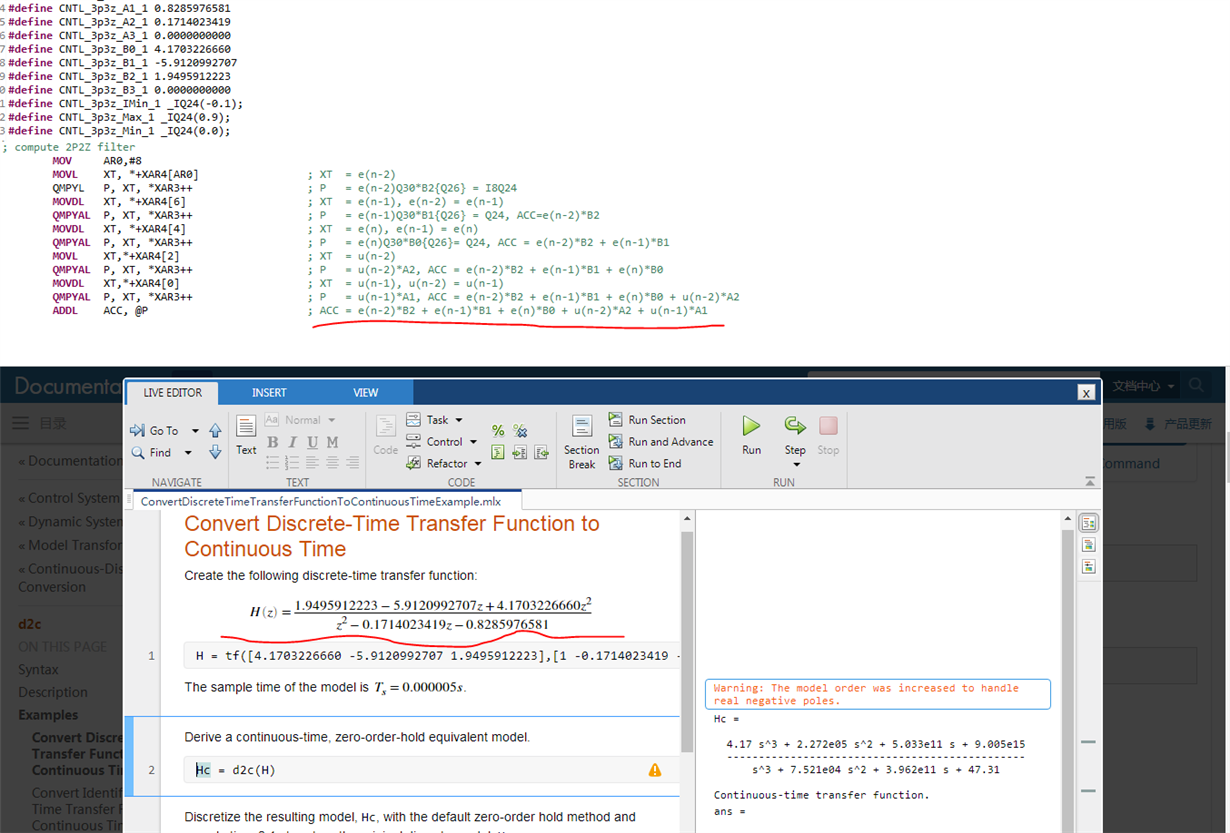Other Parts Discussed in Thread: SFRA, C2000WARE
Hi, guys, some confusion CNTL_2P2Z about the BOOSTXL_BUCKCONV demo board, see the picture belowing;
I have two question:
1) the demo example code give the a1/a2/b0/b1/b2 coefficient of the 2p2z, and what is the KDC/z0/z1/p1 ?
2) see he red box of the picture, I have confuse on it, because its unit is 1/Hz, is it right? may be is p1/(z0+z1) ? and why the formula has the p1/(z0*z1) items ?
thanks.




